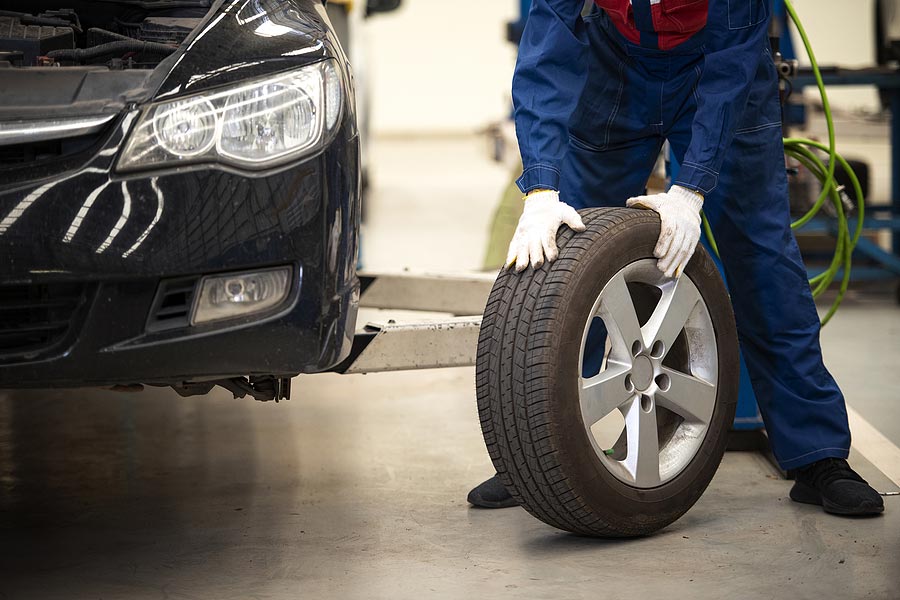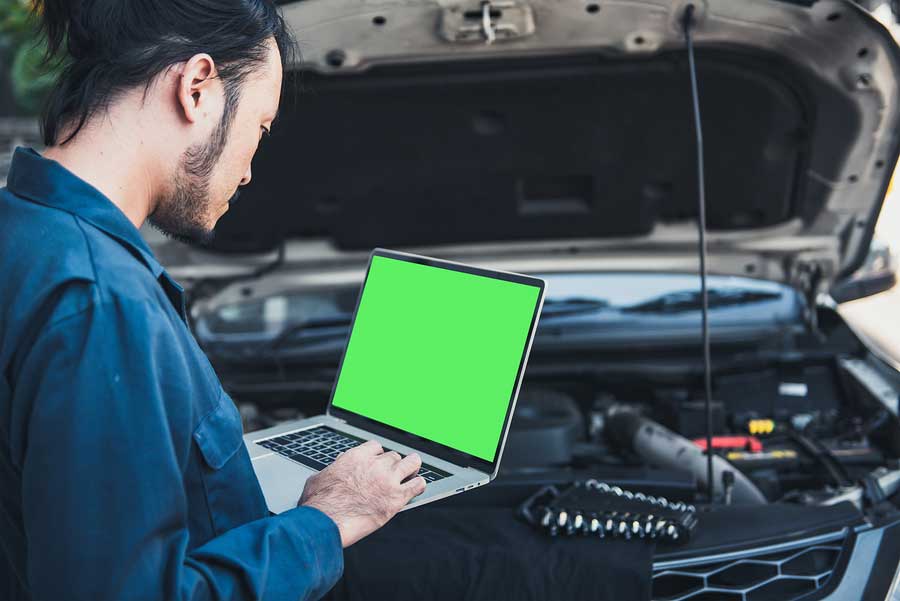
by Admin | Jan 20, 2021 | Auto Care Blog
Most people do not give their dogs much thought when choosing a suitable vehicle. But the mutt is an important member of the family, and their comfort when going out on an adventure also matters. As a pet parent, there are a few dog-friendly car suggestions that you can pick, and here are a few of them.
Ford Transit Connect
Ford Transit Connect is a convenient van for families. It has loads of space for the family outing and can comfortably accommodate a German Shepherd or other big dogs. The smaller Connect is also the right choice if you want something relatively compact that can accommodate your small family, including the dog.
Subaru Outback
The latest model has some exciting features that both humans and their furry friends will love. The rugged rear part of Outback is sufficient for fastening a dog carrier. The floor is easy to clean, and you will not have to worry a lot when the dog comes back from play with muddy paws. Subaru Outback boasts off-road characteristics, and there is no place that you cannot go with your dog for outdoor fun.
Chevrolet Colorado
If you have a refined taste for the hard-working SUVs and pickup trucks, then Chevrolet Colorado will hit the right spot. With such features as easy to clean vinyl seats and all-weather floor mats, you will not hesitate to bring the Great Dane along. The low riding tailgate will make it easier for the dog to hop in and out without much trouble.
Land Rover Discovery
Land Rover Discovery is a vehicle for the chosen few, and your canine buddy may fall in love with it, as well. It comes packed with various features such as roomy rear cargo and a split tailgate that make it ideal for both humans and dogs. The 82.7 cubic-feet storage space is more than enough wiggle room for your furry friend, and his partner. Also, the optional offloading air suspension setup allows the dog easier entry and exit to make your life and that of the dog, comfortable when traveling.

by Admin | Jan 4, 2021 | Auto Care Blog
The Old Car Buy Back and Scrap Program is a voluntary program aiming to take older and operational vehicles off the road for dismantling. The Bay Area Air District program pays $1200 on a first-come first-serve basis for registered 1997 and older cars that are still operational.
But before your vehicle can be eligible, it must meet specific requirements and Voluntary Accelerated Vehicle Retirement Program guidelines. Read on!
Some of the Qualification Requirements
For starters, your vehicle must be a light-duty pickup truck or a passenger car that is 1997 or older, operable, and registered with the California Department of Motor Vehicles (DMV). The category also includes a van with a gross weight rating not exceeding 10,000 pounds.
The vehicle must be driven to the site of dismantling using its own power and not towed there. Furthermore, the car should not be operating under economic hardship extension or the smog check repair cost waiver. Ensure that it has also passed the latest California DMV’s biennial Smog Checks so that it can be considered for eligibility, and it should be free from tampering.
Nevertheless, the vehicle can still be eligible if you had legally placed it in planned non-operational status for a total of fewer than two months. This must be during the continuous registration period of two years and happening at least three months before the sale.
Normally, the registration data from DMV records is what will determine its registration history. But if the data is inconclusive, the vehicle registration certificate copies will suffice. The vehicle dismantler will check its condition and functional inspection to determine if it meets the program requirements. They will reject the vehicle if it fails.
If you are having trouble understanding the requirements or needing more helpful information, A1 Performance Auto Repair is more than happy to help or contact the program directly. Contact us today!

by Admin | Dec 20, 2020 | Auto Care Blog
Taking care of your motor vehicle is necessary to ensure that it works effectively and safely for longer. Usually, rotating your tires is among the essential maintenance items that determine your safety on the road.
Why should you rotate your tires regularly?
Extend Tire Life
Tires wear out at different rates, with the driving tires wearing out faster. For example, the front wheels of a front-wheel-drive vehicle work harder than the rear wheels, and therefore, they are prone to wear faster.
The freeway tire failure that may happen as a result of poor tire maintenance can be quite inconvenient and risky as well, especially when it happens at night.
When you rotate the tires, you give them a chance to wear out evenly and extend their life. Ideally, you should rotate the tires after every 3000 to 5000 miles.
Check Condition
Another good reason to regularly rotate the tires is to check on their condition. During tire rotation, you check on the condition of the rims, treads, and the overall health of the wheels. Some issues are hard to see, such as the rims’ bending, blistering on the wheels, and cupping.
Mechanics have also come across razor-sharp shards of bolts, nails, and metal protruding out of the tires. Such issues are hard to see unless you remove the tires.
Cupping, for example, is quite common in older vehicles, and it can cause problems with braking, steering, and premature wear of the tires. Blistering often occurs when the car slams into a pothole. The air then gets into the blister and can cause a dangerous blowout when driving at high speeds on the highway.
There are vehicles with different wheel sizes or unidirectional tires, and you should give them extra attention. If you are unsure about the wheel rotation pattern, refer to your driver’s manual. You can also contact us at A1 performance auto repair to help with tire rotation, among other service and maintenance items.

by Admin | Aug 20, 2020 | Auto Care Blog
A smoky exhaust can be a major cause for concern as a vehicle owner. It doesn’t take long before you come across an automobile with significant smoke emissions. In the majority of the cases, a smoky exhaust is a clear sign of neglect. It means that the vehicle is poorly maintained – something to look out for when purchasing a used car.
But what does it mean, especially when it comes out of nowhere? Is it a reason to be worried?
Reasons for a Smoky Exhaust
Some repairs can cost you an arm and a leg, especially if you don’t head off a likely problem at the pass. If you notice some unusual smoke coming from the exhaust, you should scrutinize it. Does it appear when accelerating or when the vehicle is stationary?
Excessive black smoke from your contemporary diesel vehicle indicates something’s wrong in the exhaust system or injectors. This smoke is usually typical for old diesel vehicles.
It’s a bit different for gas vehicles. Black smoke emissions from a gasoline-powered car can be from excessive fuel going into the engine. The main culprit is a faulty electronic sensor or a dirty air filter.
However, blue-grey smoke could be a sign of a more serious problem. For example, you could be dealing with worn-out cylinder bores or piston rings, or even other engine components. The problem could also be the turbochargers or worn valve seals. White smoke could indicate engine coolant leak and which is a more serious issue.
On the other hand, grey smoke could be from a transmission fluid leak or PCV valve failure, especially if you are driving an automatic car.
What to do
If a smoky exhaust becomes the order of the day, the game plan is usually to take the vehicle for diagnosis. Remediation is critical at this point to avoid further damage.

by Admin | Aug 4, 2020 | Auto Care Blog
Among the signs and symptoms that you should treat as urgent include the smell of exhaust or fuel in the cabin. Gas fumes are not only unpleasant-smelling but also a health and fire risk. The exhaust contains carbon monoxide, which is quite lethal.
Unfortunately, carbon monoxide is odorless. If you smell something unpleasant in the cabin, don’t wait for the next scheduled maintenance. It may not get that far. Take immediate action.
Diagnosis
Before you can take action, be sure that the automobile ahead of you is not the one responsible for the fumes or exhaust.
Exhaust fumes can come from a leak in the exhaust system and that is quite worrisome. The problem will be located between the engine and the tailpipe.
Fuel fumes can indicate a leak somewhere in the fuel system. That means they can be anywhere in the engine compartment fuel lines or even the fuel tank.
Failing catalytic converter, usually characterized by a sulfur smell, is another common cause. The converter is an essential component in the anti-pollution system of your vehicle. Most US states require it. Over time, this vital component that converts harmful elements into less harmful ones can wear out. If this happens, your cabin starts to smell of rotten eggs.
Other tell-tale signs of a failing catalytic converter include reduced fuel efficiency and acceleration performance.
Have a qualified technician handle the catalytic converter problems.
What You Should Do
Problems in the fuel system are an imminent fire danger and should always be treated as such. Don’t sweep the issue under the rug, or you will be forced to pay top dollar for a repair. Even worse, you could lose your life when your BMW transforms into a ball of fire.
The best course of action is to park your vehicle safely and switch off the ignition. Go some distance away and call for help.

by Admin | Jul 20, 2020 | Auto Care Blog
Nothing spoils your day better than engine problems in the morning. The dreaded misfiring or sputtering of the engine can drive you up the wall. But what does it mean, and what can you do about it?
A purring or humming sound is the best indication that every component in the engine is working correctly. Don’t ignore the sputtering noise, and take action as soon as possible. Such a problem does not go away on its own.
What you can do about a Sputtering Engine
The health of your engine depends on an efficient combustion chamber, where air and fuel mix effectively. The ignition system components and the fuel must work together in a couple of series for everything to run smoothly in the combustion chamber. Misfiring happens when the ignition and fuel system components no longer function properly, and a replacement is due.
Ideally, you should replace these components as recommended by the manufacturer.
In some cases, the sputtering can be from low fuel levels that need more than a tank refill. The injectors in the fuel system must shoot sufficient fuel amounts into the engine cylinder for efficient combustion. Unfortunately, the injector sprays can somehow break down, get clogged, or wear out. The result is insufficient amounts reaching the cylinders, and the engine must work harder, hence the sputtering.
Replacing or repairing injectors for your Mercedes-Benz or BMW can solve the problem. However, you can save a handful of bucks if the problem is just a clogged injector sprout or nozzle. The component could be dirty, and a replacement may not be necessary.
Some other Causes of Sputtering Engine
A problematic component in the fuel or ignition system is not the only cause for a sputtering engine. Problems in the exhaust system are another common culprit. For example, a worn-out gasket in the exhaust system can cause your BMW to sputter. Worn out spark plugs can also cause the same problems.












